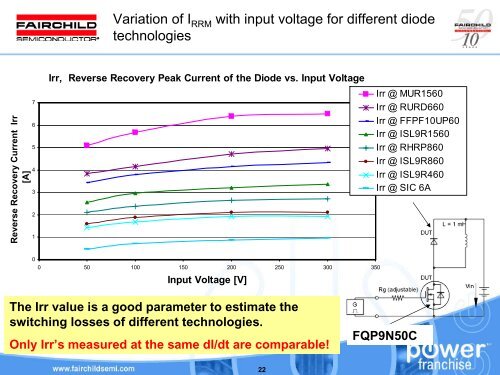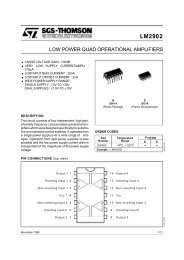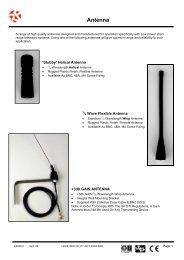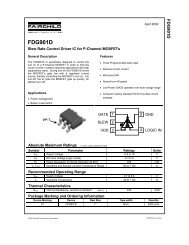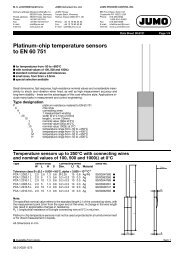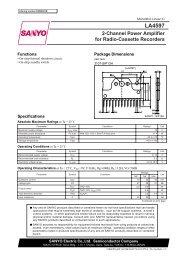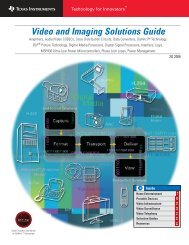Diode Reverse Recovery and its Effect on Switching Losses
Diode Reverse Recovery and its Effect on Switching Losses
Diode Reverse Recovery and its Effect on Switching Losses
You also want an ePaper? Increase the reach of your titles
YUMPU automatically turns print PDFs into web optimized ePapers that Google loves.
Variati<strong>on</strong> of I RRM with input voltage for different diode<br />
technologies<br />
<str<strong>on</strong>g>Reverse</str<strong>on</strong>g> <str<strong>on</strong>g>Recovery</str<strong>on</strong>g> Current Irr<br />
[A]<br />
7<br />
6<br />
5<br />
4<br />
3<br />
2<br />
1<br />
Irr, <str<strong>on</strong>g>Reverse</str<strong>on</strong>g> <str<strong>on</strong>g>Recovery</str<strong>on</strong>g> Peak Current of the <str<strong>on</strong>g>Diode</str<strong>on</strong>g> vs. Input Voltage<br />
Irr @ MUR1560<br />
Irr @ RURD660<br />
Irr @ FFPF10UP60<br />
Irr @ ISL9R1560<br />
Irr @ RHRP860<br />
Irr @ ISL9R860<br />
Irr @ ISL9R460<br />
Irr @ SIC 6A<br />
0<br />
0 50 100 150 200 250 300 350<br />
Input Voltage [V]<br />
The Irr value is a good parameter to estimate the<br />
switching losses of different technologies.<br />
Only Irr’s measured at the same dI/dt are comparable!<br />
FQP9N50C<br />
22


